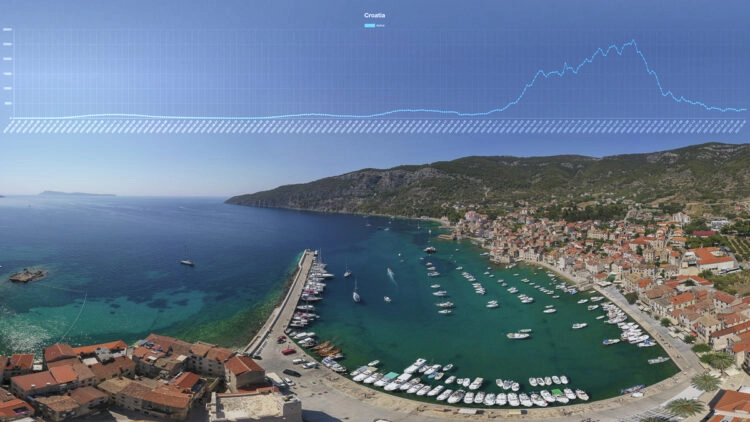Good news for all water sports enthusiasts and vacationers with destination Croatia: The 7-day incidences of coronavirus in the coastal regions of Istria, Kvarner Bay, Zadar, Sibenik and in the Dubrovnik region are already at the beginning of February further in “decline”. But it is not only in Istria, where there are currently only a good 24 new coronavirus infections per 100,000 inhabitants, that incidence figures are also falling in other regions.
Also Punat/Krk with low corona incidence
In addition to Istria County, Primorje-Gorski Kotar, in whose area the Punat marina is located, has already recorded a relatively low incidence, with a 7-day incidence of 90.8 at the beginning of February. While it is inevitably higher than Istria due to the influence of the large port city of Rijeka, if the Rijeka factor is factored out, the 7-day incidence in the Punat/Island of Krk area should be at about the same low level as Istria.
Incidence value Zadar also below 100
Only in Zadar County did the numbers increase. From 90.4 new coronavirus infections per 100,000 inhabitants on January 25, the region recorded an increase to 95.7 in early February. However, there is a possibility here that follow-up reports from the previous week may have reversed the trend.
Significant decrease in 7-day incidence in Sibenik area
Sibenik-Knin is likely to report the largest decline. While there were 164.7 new coronavirus infections per 100,000 inhabitants on Jan. 25, the penultimate cutoff date, the 7-day incidence is now only 126.8.
Split also reports declining numbers
In the Split region, the relevant 7-day incidence of coronavirus decreased from 121.2 to 112.7 at the beginning of February.
Dubrovnik and Lika Senj at low levels
Incidence for the Dubrovnik region held relatively steady at 92.4, as did Lika Senj at 73.
7-day incidence Croatia: 84.8
For all of Croatia, incidence figures (7-day) decreased from 85.8 to 84.8, according to official Croatian reports.
14-day incidence: Croatia 181.34 | Austria 224.32 | Germany 218.4
Comparing 14-day incidences using figures announced by the EU (as of 4. February), Croatia officially stands at 181.34, Austria at 224.32 new infections in 14 days per 100,000 inhabitants, and Germany at a 14-day incidence of 218.4. The corresponding long-term incidence value for Italy is still quite high at 284.55. Slovenia, with a 14-day incidence of 818.83, currently ranks rather poorly in the Mediterranean region.
Corona measures are having an effect
Confirmed in the trend: countries that were able to enforce harsh measures against large parts of the population over the winter months are already in a much better position at the preliminary stage of spring, which should already be seen at least in the Adriatic Sea.
Starts the season already Easter?
Especially the classic vacation countries in the Mediterranean region, such as Italy and Croatia, are currently urged to further reduce the incidence figures of the coronavirus, in order to be able to receive at least Easter the first guests again.
Continued tough corona measures in Croatia
Croatia is taking a rather rigid approach here that is not going down well with all segments of the population: Restaurant owners and gym operators in particular do not agree with the current government measures, and in Zagreb these groups are repeatedly protesting for a faster opening.













